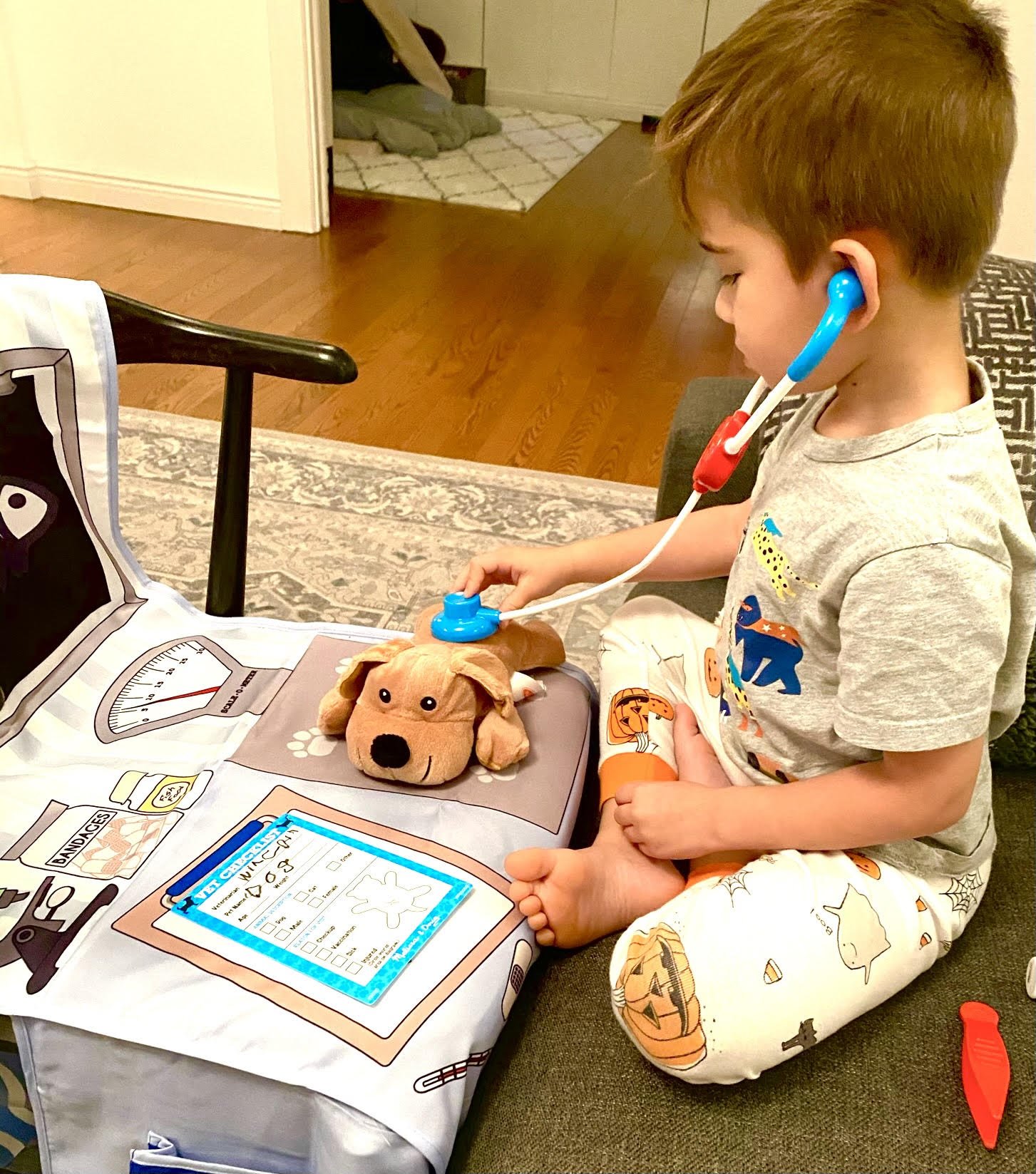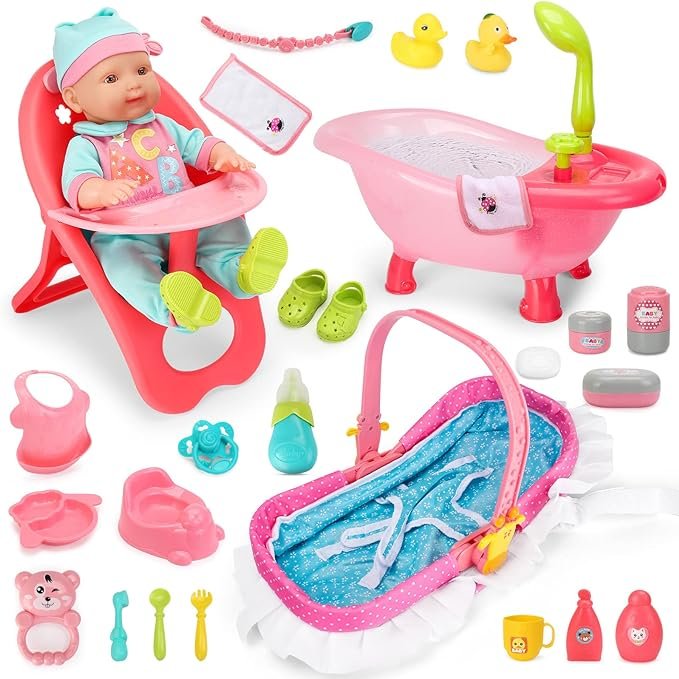Did you know that pretend play and language are interconnected?
Pretend play is when a child is playing “as if” something or someone is real.
They are creating an experience where there is more going on than what is actually happening.
Children use objects to represent other things during pretend play. In a similar way, spoken words represent objects as well.
This is because both pretend play and language require that a child mentally represent reality (Westby, 1980). Just as a child must realize that a doll is only a representation of a live baby, or that a piece of paper can serve as a doll’s blanket, so must the child understand that a word is not the object, but only a representation of the object.
To develop meaningful communication, children must have mental imagery, representational and thinking skills (Westby, 1980). Without a solid foundation of representational skills, a child will not be able to pretend that an object is something else (e.g., a block as a car) nor will they be able to use language to talk about their play.
We speech-language therapists assess play and language simultaneously for this reason. We look to see if there are any discrepancies and possible delays. Play skills must develop to a certain level before the corresponding language skills are possible. It is through play that a child can explore and practice representational skills which is critical to developing language. Language and play go hand in hand. They are interconnected.
“Play is often talked about as if it were a relief from serious learning. But for children play is serious learning. Play is really the work of childhood.”
Play time is not only what kids want to do, it is something they need to do. Playtime is where children learn best and considered the primary vehicle for learning in early childhood. Playtime helps build speech-language skills and contributes to a child’s cognitive, physical, social and emotional well-being.
Pretend play toys encourage open-ended play, which is when the child is engaging freely and creatively with materials. The children are not bound to preset instructions since there is no official way to start or end this type of play. These toys naturally encourage children to create, explore, discover and act out pretend representations, which are often based on things happening in the world around them (e.g., mealtime, bath time, bedtime, going to the doctor). Most importantly, pretend play toys can grow with a young child and can be used in many different ways for MANY years!
Here are a few highly recommended pretend play toys:
For more products that I highly recommend, check out my Amazon Affiliate Storefront.
While I may receive commission for qualifying purchases, this is at no additional cost to you! Please take advantage of my many lists of products, which were carefully and expertly created with over 15 years of experience in the Education Field.








